Genre: Maze Developer: Sega of Japan Publisher: Sega of Japan Players: 1 Released: 1985
It’s a funny quirk of history that the Famicom and SG-1000 hit the market on the very same day, July 15, 1983. Sega’s console had essentially the same specs as the ColecoVision, with a limited palette and chunky scrolling, and was outclassed from Day One. Sadly, despite a reasonable debut, it couldn’t compete with Nintendo’s juggernaut in the long run.
Now, that doesn’t mean every game was automatically better on the console with more impressive hardware. Any experienced player knows that’s not so, as a given game can often play better on the “worse” console, and vice versa. But when it comes to cross-platform titles, most of us would at least expect the Famicom versions to look and sound superior.
This makes Chack’n Pop a particularly interesting case. This SG-1000 release is a port of Taito’s 1983 arcade game, which is mainly remembered as an ancestor to their famous Bubble Bobble series. You play as Mr. Chack’n, a little yellow hemisphere of cuteness with two powers: dropping bombs and sticking to ceilings. He can’t marry his other half, Miss Chack’n, until he’s rescued the hearts that were stolen from them and trapped in cages across 14 levels, or “mazes.” In his path are Monstas that hatch from eggs and will kill your Chack’n if they catch him. These can be destroyed by his bombs – but so can Chack’n.
Also a threat are the Mightas who originally stole your hearts. Chack’n doesn’t engage them directly, but they serve as a timer by slowly pushing a stone across the top of the screen, aiming to plug the exit before he escapes. Both foes were later seen in Bubble Bobble, and just as in the later game, you get rewarded with fruit and power-ups for killing multiple enemies all at once. Further complicating matters are environmental hazards like breakable water jars, destructible walls, and moving platforms.
Though it wasn’t a raging success in the arcades, Chack’n Pop still got ports to the Famicom and SG-1000, as well as several computer platforms like the MSX. The Famicom release was ported by Taito themselves, while according to the title screen, the SG-1000 conversion was “reprogrammed” by Sega in 1985 and released as a My Card. Both console ports are exclusive to Japan.
The SG-1000’s version of Chack’n Pop offers an inviting presentation from the get-go. Fire up your cart, and you get a colorful SEGA splash screen, then a title screen with a chipper tune. Gameplay starts with a cutscene with Miss Chack’n imploring you to “take back our hearts,” followed by a simple tutorial level that explains how the game works (in Japanese, though there’s an English translation patch by yours truly). All this is accompanied by an upbeat, multi-voice melody that fits Chack’n Pop‘s aesthetic nicely.
Meanwhile, booting up the Famicom version gives you a stark-looking title screen with dead silence. Start playing, and you’re dropped right into the arcade version’s level two, with an incessant two-note “beep-boop” as your only soundtrack. Oh, and the “beep-boop” stutters sometimes.
When it comes to content, Sega’s version of Chack’n Pop is unequivocally king. Not only does it retain the opening cutscene and tutorial level from the arcade game, but it has all 14 levels in the original order, whereas the Famicom only has nine and presents them out of sequence. Worst of all, while the arcade and SG-1000 games end with an amusing cutscene depicting the Chack’n wedding, the Famicom version just loops with no fanfare.
In fairness, the Famicom graphics are closer to the original, while its lack of music during gameplay is actually arcade-accurate: Taito’s coin-op harmonized its “beep-boop,” but it’s still a beep-boop. The melodies Sega added to the attract mode and main gameplay are completely new to the game, and they even opted to replace a few tunes (the arcade ends with “Here Comes the Bride,” whereas Sega swapped in Mendelssohn’s Wedding March).
That said, there’s something awfully cheap looking about the Famicom port. Nintendo’s hardware was capable of far more than this, but what we got feels bare-bones and almost depressing. By contrast, the SG-1000 release seems like the work of conscientious, enthusiastic programmers who were determined to create a classy title for an upstart system.
All this is fine, but how does the game play? Well, Chack’n Pop presents as a kind of oddball, single-screen platformer, but turns out to be a more cerebral affair than you’d expect. Early levels are straightforward, but by the game’s midpoint, it’s possible to end up in a “walking dead” scenario in which you literally can’t beat the current level without sacrificing a life.
Make it this far in Chack’n Pop, and you’ve realized that you’re up against a formidable puzzle-platformer that’s somewhere between Bubble Bobble and Lode Runner, plus a dash of Bomberman. The last few levels are demanding and fiendishly clever, more or less requiring that you work out the details in advance before plunging in. Doing all this without getting eaten or running out of time is no small feat, and having a pause button comes in handy. Beating this one in the arcade would have gotten pretty expensive.
With a challenge like this, strong controls are a must, and the SG-1000 gets the edge here too. Chack’n Pop isn’t a particularly intuitive game and will always have a learning curve, especially since Mr. Chack’n can’t jump. Having beaten both console ports, I found the SG-1000 to be crisper, more responsive, and more predictable than the floppier Famicom version. However, the SG-1000 port falls short in one small, but important aspect. One subtlety in Chack’n Pop is that it rewards you for non-violence. If you finish a level without killing any Monstas, you get a massive bonus and an extra life. This is only practical in the first few levels but provides a crucial buffer for tackling the remainder of the game. When the Famicom release was programmed, the pacifist option was clearly kept in mind, as the required timing is calibrated perfectly. Once you’ve got the routing down it still demands quick and clean play, but no more than that. In Sega’s port, though, it’s much riskier and depends heavily on RNG, and I wasn’t able to rely on it. To me, that robs the game of a bit of its charm.
I wouldn’t normally spend this much time in a review stressing a cross-platform comparison, but Chack’n Pop represents an important moment in the SG-1000 library. As we know, Sega’s system would ultimately need to arise, phoenix-like, from its own ashes, transforming into the Mark III in order to compete with the Famicom. But Chack’n Pop showed that under the right circumstances, and with the right programmers and the right type of game, the SG-1000 could not only hold its own against the Famicom, but even surpass it. As a game, it’s not going to be everyone’s cup of tea, but as a labor of love, it deserves respect.
SCORE: 9 out of 10

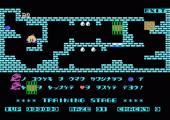
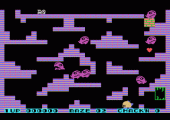
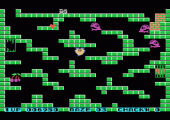
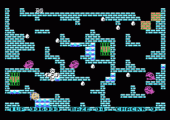
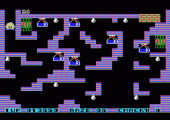
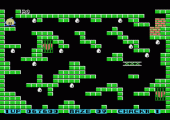
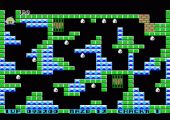
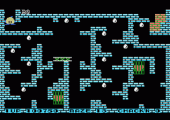

Recent Comments